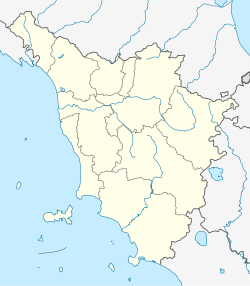Gallicano
In this article, we will delve into the fascinating world of Gallicano. We will explore its origins, its evolution over time and its impact on different aspects of daily life. Gallicano has been the subject of study and debate for many years, and its relevance is still evident in today's world. Through this article, we aim to shed light on Gallicano, analyzing its importance and influence in today's society. Join us on this journey to discover more about Gallicano and its role in the contemporary world.
Gallicano | |
|---|---|
| Comune di Gallicano | |
 Panorama of Gallicano from the cathedral | |
| Coordinates: 44°4′N 10°26′E / 44.067°N 10.433°E | |
| Country | Italy |
| Region | Tuscany |
| Province | Lucca (LU) |
| Frazioni | Trassilico |
| Government | |
| • Mayor | David Saisi |
| Area | |
• Total | 30.5 km2 (11.8 sq mi) |
| Elevation | 186 m (610 ft) |
| Population (31 March 2017)[2] | |
• Total | 3,774 |
| • Density | 120/km2 (320/sq mi) |
| Demonym | Gallicanesi |
| Time zone | UTC+1 (CET) |
| • Summer (DST) | UTC+2 (CEST) |
| Postal code | 55027 |
| Dialing code | 0583 |
| Website | Official website |
Gallicano is a comune (municipality) in the Province of Lucca in the Italian region Tuscany, located about 70 kilometres (43 mi) northwest of Florence and about 25 kilometres (16 mi) northwest of Lucca.
The municipality is located in Serchio Valley, on the west bank of the Serchio river. It is served by Barga-Gallicano railway station located on the opposite side of the river, accessible by a bridge built in 1923.[3]
Gallicano borders the following municipalities: Barga, Borgo a Mozzano, Castelnuovo di Garfagnana, Coreglia Antelminelli, Fabbriche di Vallico, Fosciandora, Molazzana, Fabbriche di Vergemoli.
Main sights
- The Rocca (Castle) of Trassilico.
- Church of San Giovanni Battista
- Church of Sant'Andrea
- Church of San Jacopo Apostolo
- Church of Santa Lucia
References
- ^ "Superficie di Comuni Province e Regioni italiane al 9 ottobre 2011". Italian National Institute of Statistics. Retrieved 16 March 2019.
- ^ All demographics and other statistics: Italian statistical institute Istat.
- ^ Marzi, Paolo (30 September 2016). "Un compleanno speciale. I 105 anni della stazione Barga-Gallicano". il Giornale di Gallicano (in Italian).
External links
![]() Media related to Gallicano (Italy) at Wikimedia Commons
Media related to Gallicano (Italy) at Wikimedia Commons



